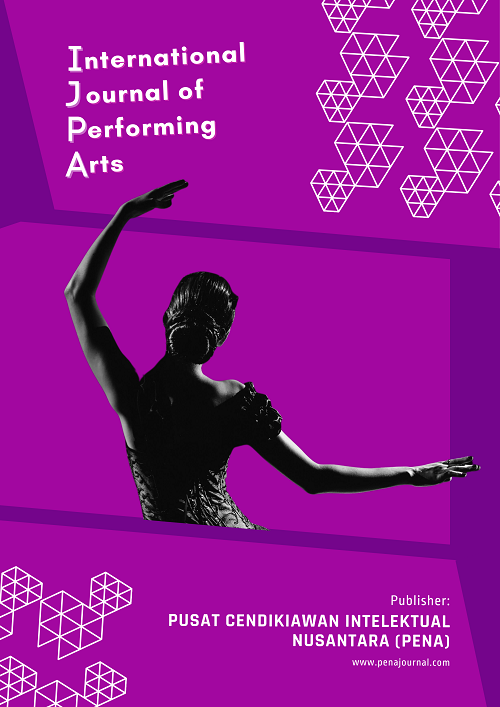A VISUAL NARRATIVE: JAVANESE MASK COLLECTIONS AT THE MPU TANTULAR MUSEUM Identification of the East Java Cultural Diversity Mask Collection
A VISUAL NARRATIVE: JAVANESE MASK COLLECTIONS AT THE MPU TANTULAR MUSEUM Identification of the East Java Cultural Diversity Mask Collection
DOI:
https://doi.org/10.56107/ijpa.v4i1.255Keywords:
East Javanese Mask, Mask Identification, Mpu Tantular Museum Mask CollectionAbstract
This article aims to identify and classify the mask collections at the Mpu Tantular State
Museum, Sidoarjo, as a visual narrative of the cultural richness of East Java and its
surrounding regions. Through in-depth identification activities conducted from September
17–19, 2025, the mask collections were classified into three main variants based on regions:
Topeng Malang (Malang Masks), Topeng Madura (Madura Masks), and some other regional
masks.
The Malang mask collection, the most numerous collection, represents the epic tale of
Panji Asmorobangun. Its characteristic features include symmetrical, refined carvings and
the use of philosophical colors. The green color shown by Panji symbolizes chivalry and
tranquility, contrasting sharply with the fiery red possessed by Klana Sewandana, which
represents anger. The faded colors on the ancient masks emphasize their inherent historical
and spiritual gravitas and value as evidence of the preservation of this noble art form.
The Madura mask collection, associated with the Madura’s puppet mask
performances, displays characters that reflect the resilience of the community from the
Madura island, also known as the salt island. Their characteristics are simpler but firm, hard,
and expressive (such as bulging eyes or fangs), implying a strong fighting spirit and
straightforward demeanor.
The other regional masks group completes the Nusantara (an archipelago country)
mosaic, including collections from Cirebon (such as the White Elephant mask), Yogyakarta,
as well as the Sandur mask (from Jombang/ Tuban) and the Dongkrek mask (from Madiun).
The presence of these masks from outside the immediate region confirms East Java’s cultural
connection and acculturation with the wider archipelago.
Overall, the mask collection at the Mpu Tantular museum functions as a "spiritual
window" that reflects the contrast and unity of values, ranging from the agrarian idealism
(Malang) to the coastal fighting spirit (Madura). These artifacts are an invaluable treasure
that ensures moral philosophy and local wisdom continue to live on as an educational
medium for future generations.
References
Alifia, M. (2022). Peranan Museum Mpu Tantular Dalam Melestarikan Koleksi Warisan. Jurnal Pendidikan Sejarah, 1-
Bouvier, H. (2002). Lebur: Seni Musik dan Pertunjukan dalam Masyarakat Madura. Jakarta: Yayasan Asosiasi Tradisi
Lisan dan Yayasan Obor Indonesia.
Harini, N. (2012). Transformasi Tari Topeng Malang Dalam Pertunjukan Dramatari Tradisional di Wilayah Kabupaten
Malang. Jurnal Media, Seni dan Desain, 46-57.
Hidajat, R. (2008). Wayang Topeng Malang. Malang: Gantar Gumelar, Jurusan Seni dan Desain.
Hidajat, R. (2012). Wayang Topeng Malang dalam Perubahan Kebudayaan. Jurnal Seni dan Pendidikan Seni Imaji, 34.
Robby, H. (2019). Dari Panggung Ke Panggung: Perkembangan Topeng Di Malang. Malang: Universitas Negeri Malang.
Soedarsono. (1977). Tarian Tarin Indonesia 1. In Soedarsono, Tarian Tarin Indonesia 1. Jakarta: Proyek Pengembangan
Media Kebudayaan.
Soelarto. (n.d.). Topeng Madura (Topong). Jakarta: Proyek Pengembangan Media Kebudayaan, Ditjen Kebudayaan
Departemen & K Republik Indonesia.





















